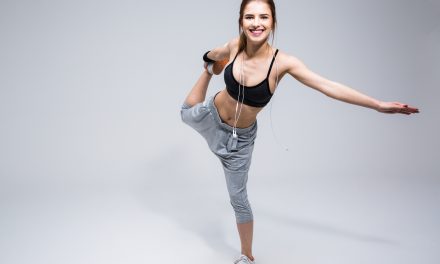
Chiropractic Research Roundup

This article covers 15 practical research studies from the past few weeks. The authors reviewed hundreds and highlighted only those papers that have the ability to enrich your practice, then summarized each with one or two sentences.
Review the latest news:
- When not to MRI the rotator cuff
- Wrist splints ease lateral epicondylitis (and CTS)
- Vitamin D for migraines
- Avoid compression socks for Achilles tendinopathy
- Cervical spine manipulation helps TMD
- And much more…
1. Migraine
“We found that 2000 IU/ day vitamin D3 supplementation for 12 weeks could improve headache characteristics and might reduce neuro-inflammation in episodic migraine.”
Ghorbani Z, Togha M, Rafiee P, Ahmadi ZS, Magham RR, Djalali M, Shahemi S, Martami F, Zareei M, Jahromi SR, Ariyanfar S. Vitamin D3 might improve headache characteristics and protect against inflammation in migraine: a randomized clinical trial. Neurological Sciences. 2020 Jan 2:1-0. Link
2. Headache
“Dry needling should be considered for the treatment of headache [cervicogenic, tension-type, and migraine], and may be applied either alone or in combination with pharmacological treatments.”
Vázquez-Justes D, Yarzábal-Rodríguez R, Doménech-García V, Herrero P, Bellosta-López P. Analysis of the effectiveness of the dry puncture technique in headaches: systematic review. Neurology. 2020 Jan 13. Link
3. TMD
“Fifty individuals with TMD were randomly assigned to receive cervical HVLAT or sham manipulation for four visits over 4-weeks… Significant 2-way interactions were noted in [functional limitation and kinesiophobia]… The HVLAT group had lower fear at 4-weeks and improved jaw function earlier (1-week)…. with significant differences in successful outcomes noted immediately after baseline treatment and at 4-weeks.”
Reynolds B, Puentedura EJ, Kolber MJ, Cleland JA. Effectiveness of cervical spine high velocity low amplitude thrust added to behavioral education, soft tissue mobilization, and exercise in individuals with temporomandibular disorder (TMD) with myalgia: A randomized clinical trial. Journal of Orthopaedic & Sports Physical Therapy. 2020 Jan 6(0):1-40. Link
4. Rotator Cuff
“Over 90.2% of [rotator cuff] patients had premature MR [in a study of 51 patients] I. The use of MRI before a trial of conservative management in patients with:
- atraumatic shoulder pain
- minimal to no strength deficits on physical examination, and
- suspected cuff tendinopathy other than full-thickness tears provides negative value in the management of these patients, at both the individual and population level.”
Cortes A, Quinlan NJ, Nazal MR, Upadhyaya S, Alpaugh K, Martin SD. A value-based care analysis of magnetic resonance imaging in patients with suspected rotator cuff tendinopathy and the implicated role of conservative management. Journal of shoulder and elbow surgery. 2019 Nov 1;28(11):2153-60. Link
5. Shoulder Impingement Syndrome
“Evidence suggests it is beneficial to include treatment to increase thoracic spine mobility within shoulder impingement syndrome management.”
Meadows S, Smith G, Vaswani R. Physiotherapist survey: Increasing thoracic spine movement within the management of chronic subacromial impingement syndrome. Journal of Bodywork and Movement Therapies. 2020 Jan 1;24(1):93-9. Link
6. Lateral Epicondylitis
“Using wrist joint splinting in addition to [wrist extensor stretching, ultrasound, and deep friction massage] for a short duration is effective for improving pain intensity…[and] may also be effective for improving wrist ROM and grip strength in the treatment of patients with lateral epicondylitis….”
Kachanathu SJ, Alenazi AM, Hafez AR, Algarni AD, Alsubiheen AM. Comparison of the effects of short-duration wrist joint splinting combined with physical therapy and physical therapy alone on the management of patients with lateral epicondylitis. European journal of physical and rehabilitation medicine. 2019 Aug;55(4):488-93. Link
7. Carpal Tunnel Syndrome
“…intraneural blood flow velocity is dependent on median nerve function and wrist posture such that patients with mild CTS are more susceptible to the effects of non-neutral wrist postures…. This study stresses the importance of limiting exposure to non-neutral wrist postures in patients with early signs of the condition.”
Editorial comment: Consider a night-time wrist splint for mild CTS cases.
Zuniga AF, Ghavanini AA, Israelian G, Keir PJ. Blood flow velocity but not tendon mechanics relates to nerve function in carpal tunnel syndrome patients. Journal of the Neurological Sciences. 2020 Jan 21:116694. Link
8. LBP (Risk Factors)
“History of back pain was the only risk factor consistently associated with back pain…. No associations were found between…structural imaging findings and back pain.”
Øiestad BE, Hilde G, Tveter AT, Peat GG, Thomas MJ, Dunn KM, Grotle M. Risk factors for episodes of back pain in emerging adults. A systematic review. European Journal of Pain. 2020 Jan;24(1):19-38. Link
9. Lumbar Stenosis
“The presence of lumbosacral transitional vertebra increases the likelihood of degenerative spinal stenosis [by a factor of 3.74]”
Abbas J, Peled N, Hershkovitz I, Hamoud K. Is Lumbosacral Transitional Vertebra Associated with Degenerative Lumbar Spinal Stenosis?. BioMed Research International. 2019;2019. Link
10. Sciatica
[Epidural Steroid Injections] “ESIs were not cost-effective at either the 3-month or 6-month follow-up period…. At 6 months, neither ESIs nor conservative [medical] management provide significant improvements in quality of life outcomes.”
Pennington Z, Swanson MA, Lubelski D, Mehta V, Alvin MD, Fuhrman H, Benzel EC, Mroz TE. Comparing the Short-Term Cost-Effectiveness of Epidural Steroid Injections and Medical Management Alone for Discogenic Lumbar Radiculopathy. Clinical Neurology and Neurosurgery. 2020 Jan 13:105675. Link
11. Femoroacetabular Impingement
“The overall prevalence of radiographic findings consistent with FAI in [1893] young patients with hip pain was 60.5%. ….Of these hips, 10.1% had cam type, 17.9% had pincer type, and 72.0% had mixed type.”
Zhou J, Melugin HP, Hale RF, Leland DP, Bernard CD, Levy BA, Krych AJ. The Prevalence of Radiographic Findings of Structural Hip Deformities for Femoroacetabular Impingement in Patients With Hip Pain. The American Journal of Sports Medicine. 2020 Jan 10:0363546519896355. Link
12. Achilles Tendinopathy
“One in twenty recreational runners develop Achilles tendinopathy (AT). Using a training schedule or sport compression socks increases the risk of developing AT and this should be discouraged in a comparable running population.”
Lagas IF, Fokkema T, Verhaar JA, Bierma-Zeinstra SM, van Middelkoop M, de Vos RJ. Incidence of Achilles tendinopathy and associated risk factors in recreational runners: A large prospective cohort study. Journal of Science and Medicine in Sport. 2019 Dec 19. Link
13. Plantar Fasciitis
“The results of this study indicate that cross friction massage of the plantar fascia and stretching of the gastroc/soleus complex showed the greatest overall improvement in terms of reducing the pain and disability and ankle dorsiflexion ROM….”
Yelverton C, Rama S, Zipfel B. Manual therapy interventions in the treatment of plantar fasciitis: A comparison of three approaches. Health SA Gesondheid (Online). 2019;24:1-9. Link
14. Plant-Based Diet
“In this cohort study of 29,682 US adults pooled from 6 prospective cohort studies, intake of processed meat, unprocessed red meat, or poultry was significantly associated with incident cardiovascular disease, but fish intake was not.” The study reported the following hazard ratios:
- Processed meat 1.07
- Unprocessed red meat 1.03
- Poultry 1.04
- Fish 1.00
Zhong VW, Van Horn L, Greenland P, et al. Associations of Processed Meat, Unprocessed Red Meat, Poultry, or Fish Intake With Incident Cardiovascular Disease and All-Cause Mortality. JAMA Intern Med. Published online February 03, 2020. doi:10.1001/jamainternmed.2019.6969 Link
15. Fibromyalgia
A study of 310 fibromyalgia patients revealed that “98.1% reported using some form of complementary and integrative management.” [Chiropractic was used by 39.3%.]
Mohabbat AB, Mahapatra S, Jenkins SM, Bauer BA, Vincent A, Wahner-Roedler DL. Use of Complementary and Integrative Therapies by Fibromyalgia Patients: A 14-Year Follow-up Study. Mayo Clinic Proceedings: Innovations, Quality & Outcomes. 2019 Dec 1;3(4):418-28. Link
Editorial Comment: If this sample could be extrapolated to the entire population, it would result in about two of every five fibromyalgia sufferers trying chiropractic care. That would be a huge pool of potential patients, because, according to the National Fibromyalgia Association website, the disorder affects 3-6% of the world’s population.

















